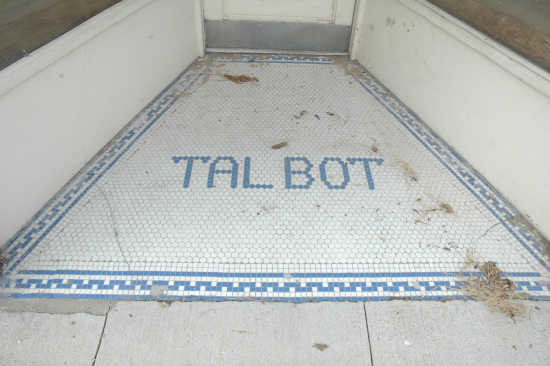Nevada-made antique reel sells for $2,400

The entrance to the Vernon County Public Defender's office is like many others in Nevada, except for the name inlaid in tile at the entryway -- Talbot.
The vagaries of wind blow grass, leaves and other debris into the entrance, often obscuring the name. But it takes more than a little clutter to blot out the Talbot name or lessen the impact it had on turn-of-the-century Nevada.
Although it's been decades since those tiles were laid and more than three-quarters of a century since one of their world-famous reels was produced, the Talbot name is still recognized by fishing paraphernalia collectors and enthusiasts. In a time when a fishing reel could be had for less than $2 from Sears, Roebuck and Company, a Talbot reel would set affluent anglers back at least $34.
The Talbot reel was made with high-quality materials including sapphire bearings which made the reel practically noiseless. It also used "German Silver" or nickel which gave the reel a shiny appearance. A Talbot with a personalized presentation box inlaid with ivory could set an angler back more than $800.
William H. Talbot was a watchmaker who had many interests, one of them was fishing. He began making fishing reels in 1877 but it wasn't until 1904 that he filed incorporation papers for the William H. Talbot Reel Company. Originally William was in business with his brother John in a watchmaking/jewelry business at 108 E. Cherry and moved to 121 W. Cherry in 1908, a building had previously housed a bank.
In addition to laying down the mosaic, the Talbots suspended a large pair of eyeglasses above the entranceway to denote yet another of their businesses, optometry. William then opened a factory at the corner of Washington and Austin to produce the reels and Jan. 7, 1901, the Nevada Daily Mail reported that Talbot had purchased an electric motor to power his machinery and proceeded to heap fulsome praise upon the man.

"W. H. Talbot, the inventor and manufacturer of the famous Talbot Reel has purchased an electric motor, which will furnish the power to his machinery.
"The Talbot Reel is recognized as the most convenient and durable reel on the market, its points of mechaicism (sic) surpass those of any other reel and Mr. Talbot has had ready sale for them, in fact the demand has been so strong that he has been unable to supply it. W. H. Talbot is a genius and besides a most clever gentleman and an estimable citizen."
Talbot continued making his reels in Nevada until 1913 when he moved to Kansas City and partnered with the Schmelzer Arms Company, a large store at 1218 Grand Avenue. The Schmelzer storefront was five stories high and advertised "Fishing Tackle, Fire Arms, Fire Works, Cutlery, Athletic Goods & Bicycles, Talking Machines, Kodaks, Toys."
Talbot was eased out of control of the Talbot Reel Company and the reels continued to be made but the Great Depression soon ended that. According to Charles Schmelzer III, great-grandson of the founder of Schmelzer Arms and a lawyer and lead partner of the Smelzer Law Firm, by 1938 the company sold off what inventory it could to pay its bills before closing for good.
"By 1938, the end of the depression, they had all kinds of inventory that wasn't selling," Schmelzer said. "They liquidated the company and paid off their creditors and that was that."
According to Al Fenske, who became interested and investigated the company, a Talbot reel was purchased at an auction in Sheldon in April for $750 and the winner turned around and sold it on eBay for $2,400. Today, two examples of Talbot reels reside in the Bushwhacker Museum, just outside the door to director Terry Ramsey's office.
